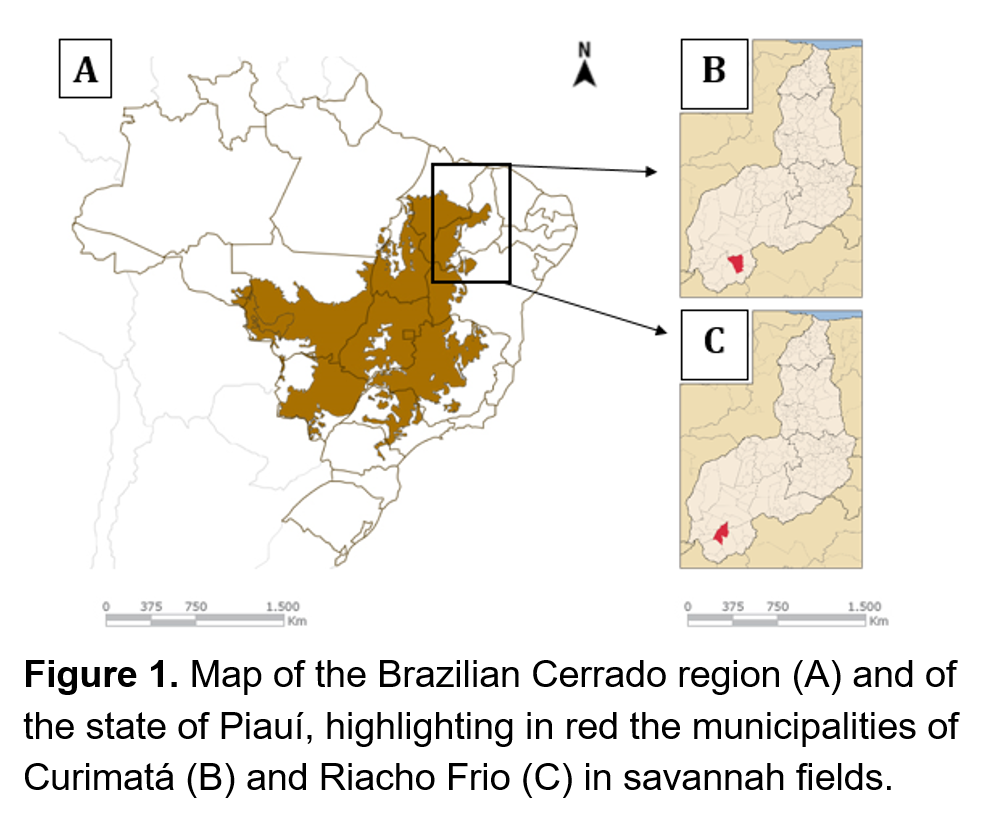Nitrogen fertilization strategies in the cultivation of Cactus pear in Brazilian Savannah localities
DOI:
https://doi.org/10.56890/jpacd.v23i.456Keywords:
Agronomic traits, Biomass, Cactaceae, Nopalea cochinillifera,, Urea applicationAbstract
This study aimed to evaluate the agronomic parameters and the chemical composition of the cactus pear variety Doce (Nopalea cochenillifera) in different Brazilian savannah localities, subjected to different nitrogen fertilization strategies. A randomized block design was used in this experiment, with a 2× 4 × 2 factorial arrangement with five replications. The factors corresponded to two application frequencies of nitrogen fertilization (30 days and 30/60 days), four nitrogen doses (0, 100, 200, 400 kg ha-1 year-1), and two cactus pear cultivation localities, with Locality 1 corresponding to the municipality of Curimatá and Locality 2 corresponding to the municipality of Riacho Frio. After one year of cultivation, there was no interaction (P>0.05) for frequency × doses × locality, doses × locality, and frequency × doses. The means observed for fresh and dry matter production varied from 57.0 to 68.0±2.9 t ha-1 and from 2.4 to 3.7±0.2 t ha-1, respectively. There was an interaction (P<0.05) between frequency × locality for fresh matter production, dry matter production, water-use efficiency, water accumulation, and carrying capacity. For the chemical composition, there was an interaction (P<0.01) between frequency × dose for the mineral content matter. Fertilization splitting associated with the highest nitrogen application dose resulted in better performance for the cactus pear variety of Doce grown in the Brazilian savannah region.
Publication Facts
Reviewer profiles N/A
Author statements
Indexed in
- Academic society
- Journal of the Professional Association for Cactus Development
- Publisher
- Professional Association for Cactus Development




